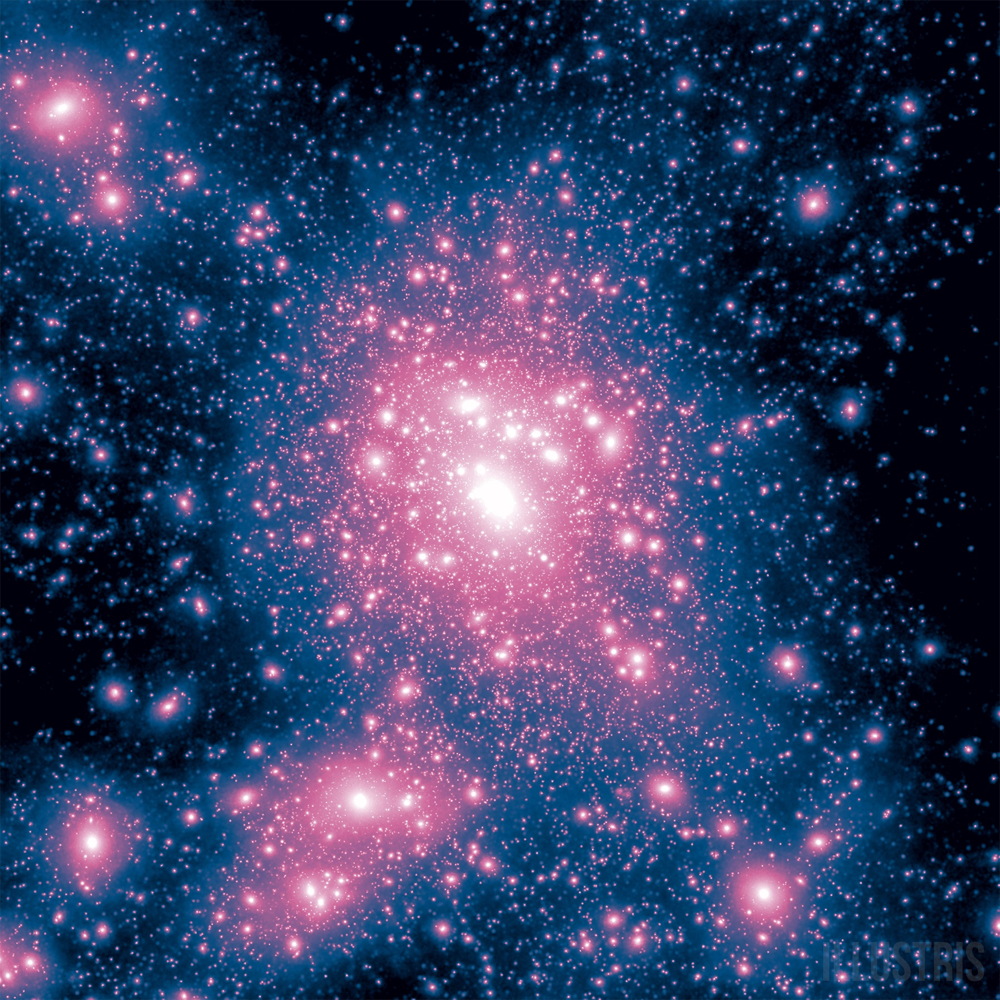Dark Matter Murder Mystery: Is Weird Substance Destroying Neutron Stars?

The mysterious substance that makes up most of the matter in the universe may be destroying neutron stars by turning them into black holes in the center of the Milky Way, new research suggests.
If astronomers successfully detect a neutron star dying at the metaphorical hands of dark matter, such a finding could yield critical insights on the elusive properties of material, scientists added.
Dark matter — an invisible substance thought to make up five-sixths of all matter in the universe — is currently one of the greatest mysteries in science. The consensus among researchers suggests that dark matter is composed of a new type of particle, one that interacts very weakly at best with all the known forces of the universe. As such, dark matter is invisible and nearly completely intangible, mostly detectable only via the gravitational pull it exerts. [8 Baffling Astronomy Mysteries]
Now, physicists suggest answers to the mystery of dark matter might lie in another puzzle, known as the missing pulsar problem.
A pulsar is a kind of neutron star, which is a super-dense remnant of a massive star left behind after dying in a gigantic explosion known as a supernova. Neutron stars can devour matter from companion stars, acts of cannibalization that make neutron stars give off pulses of radiation, earning such neutron stars the name pulsar.
According to current astrophysical and cosmological models, several hundred pulsars should be orbiting the supermassive black hole at the heart of the Milky Way. However, searches for these pulsars by looking for the radio waves they emit have so far come up empty-handed.
Now researchers suggest dark matter could destroy these neutron stars, transforming them into black holes.
Breaking space news, the latest updates on rocket launches, skywatching events and more!
Dark matter, like ordinary matter, is drawn to the gravity of other matter. The greatest concentration of normal matter in the Milky Way is at its center, so the greatest concentration of dark matter is there as well.
In a region of high dark matter density such as the heart of the Milky Way, an enormous amount of dark matter particles could accumulate in a pulsar, causing it to grow massive enough to collapse and form a black hole.
"It is possible that pulsars imploding into black holes may provide the first concrete signal of particulate dark matter," said study co-author Joseph Bramante, a physicist at the University of Notre Dame.
The models of dark matter that are most consistent with this idea, and with observations of pulsars seen outside the galactic center, are ones that suggest dark matter is asymmetric, meaning there is more of one kind of dark matter particle than its antiparticle counterpart. Normal matter is asymmetric as well — there are far more protons in the universe than anti-protons. (When a particle and its antimatter counterpart meet, they annihilate each other, releasing a burst of energy — a proof of Einstein's famous equation, E=mc2, which revealed mass can be converted to energy and vice versa.)
"For me, the most surprising result is that already existing models of dark matter could cause pulsars at the galactic center to collapse into black holes," Bramante told Space.com.
If dark matter is asymmetric, this would be consistent with "why there is more matter than antimatter in the universe, and why there is five times more dark matter than visible matter," Bramante added.
The mass of the dark matter particle responsible for imploding pulsars in the galactic core might be 100 times lighter than an electron or heavier than 100 million protons. If dark matter is as massive as 100 million protons, it would take more than 1,000 times the energies capable at the LHC to create them, Bramante noted. This suggests that looking for an imploding pulsar in the centers of galaxies might be a more feasible way to learn about dark matter.
There might be other explanations for the missing pulsar problem. For instance, massive stars may form short-lived, highly magnetic pulsars known as magnetars in the galactic center rather than ordinary long-lived pulsars, perhaps because stars in the galactic core might be highly magnetized. The researchers are exploring how astronomers might identify whether a pulsar in the galactic core died because of dark matter, supporting their idea.
Bramante and his colleague Tim Lindendetailed their findings Oct. 10 in the journal Physical Review Letters.
Follow us @Spacedotcom, Facebook and Google+. Original article on Space.com.

Charles Q. Choi is a contributing writer for Space.com and Live Science. He covers all things human origins and astronomy as well as physics, animals and general science topics. Charles has a Master of Arts degree from the University of Missouri-Columbia, School of Journalism and a Bachelor of Arts degree from the University of South Florida. Charles has visited every continent on Earth, drinking rancid yak butter tea in Lhasa, snorkeling with sea lions in the Galapagos and even climbing an iceberg in Antarctica. Visit him at http://www.sciwriter.us
